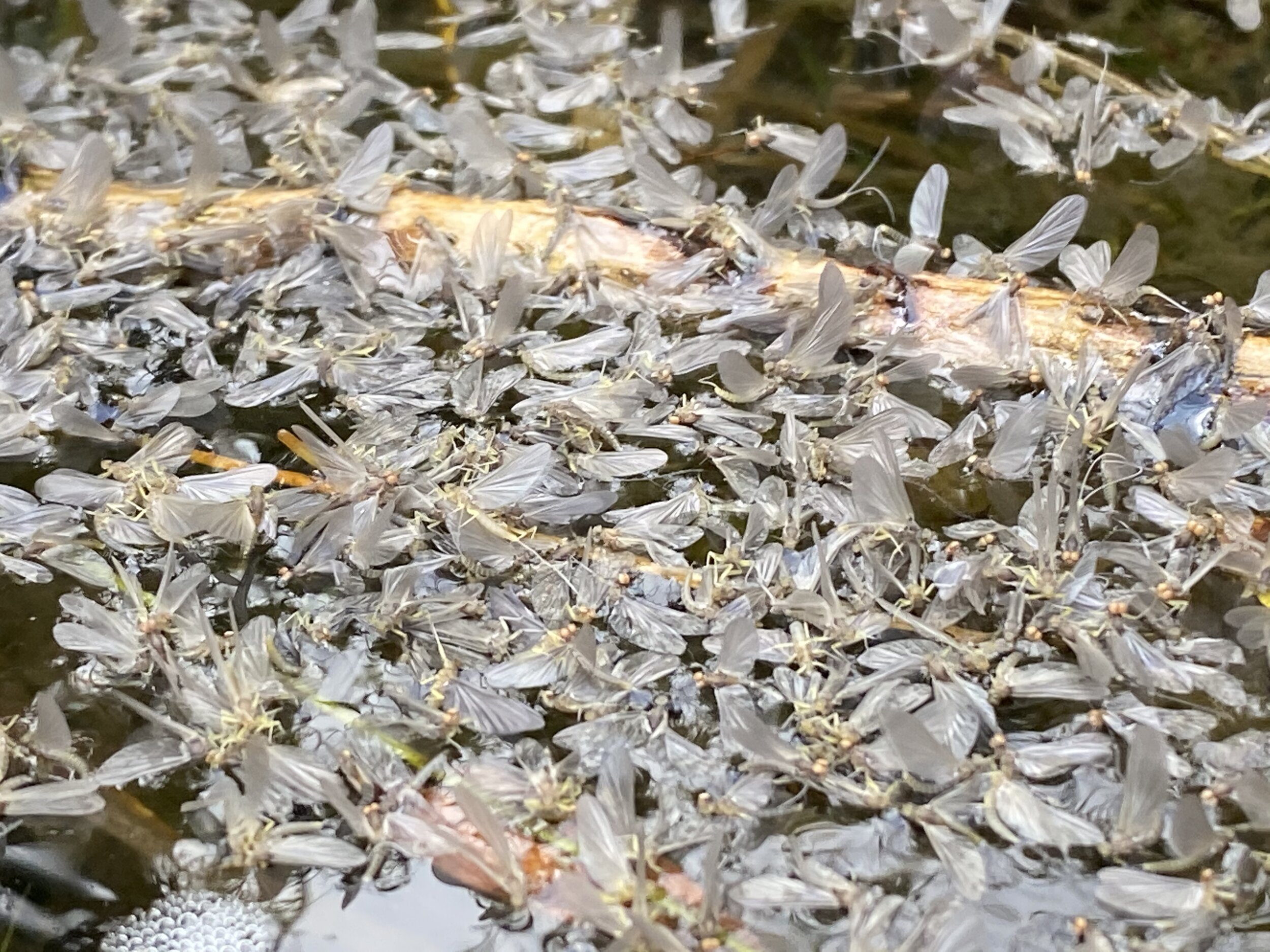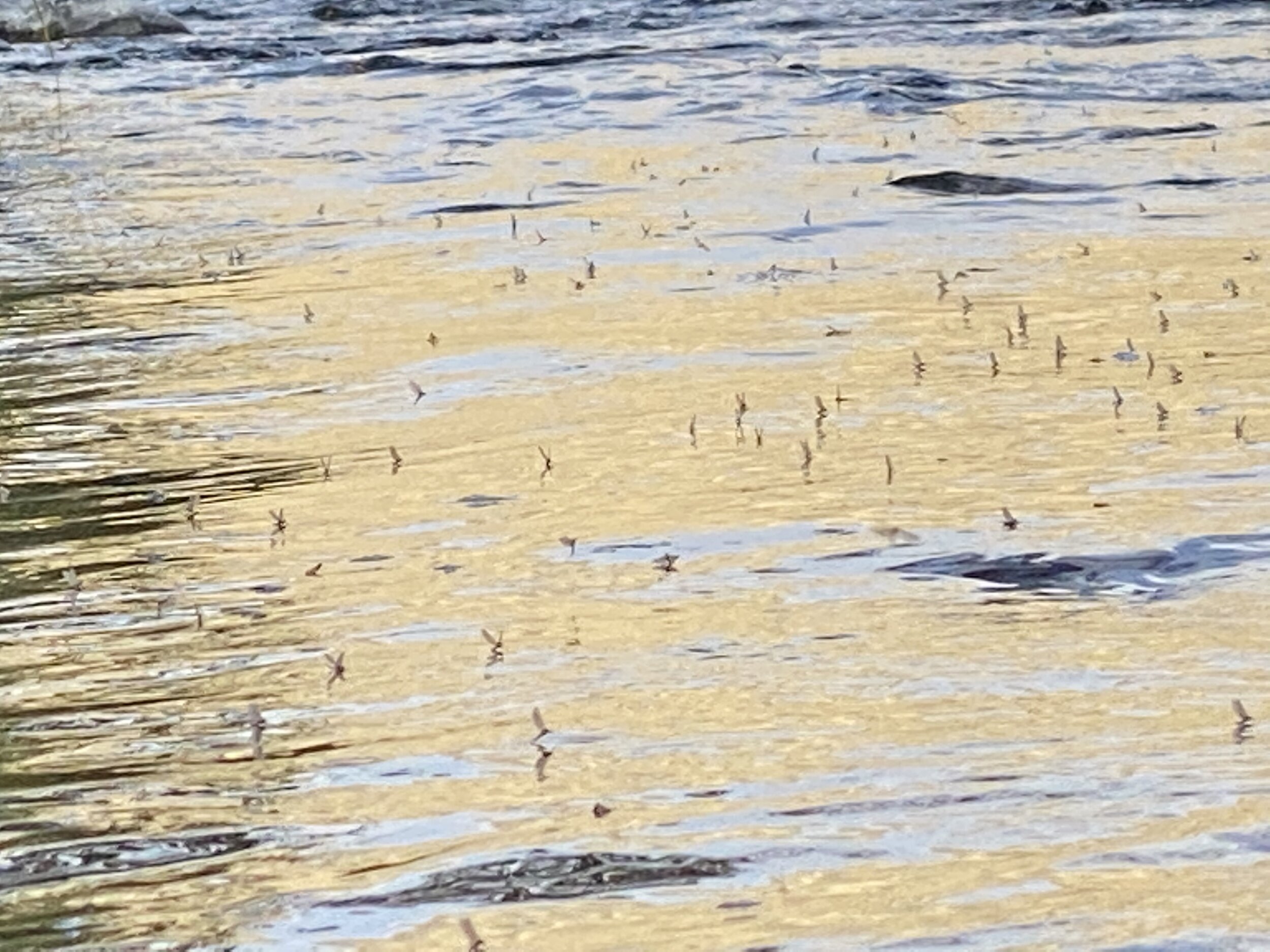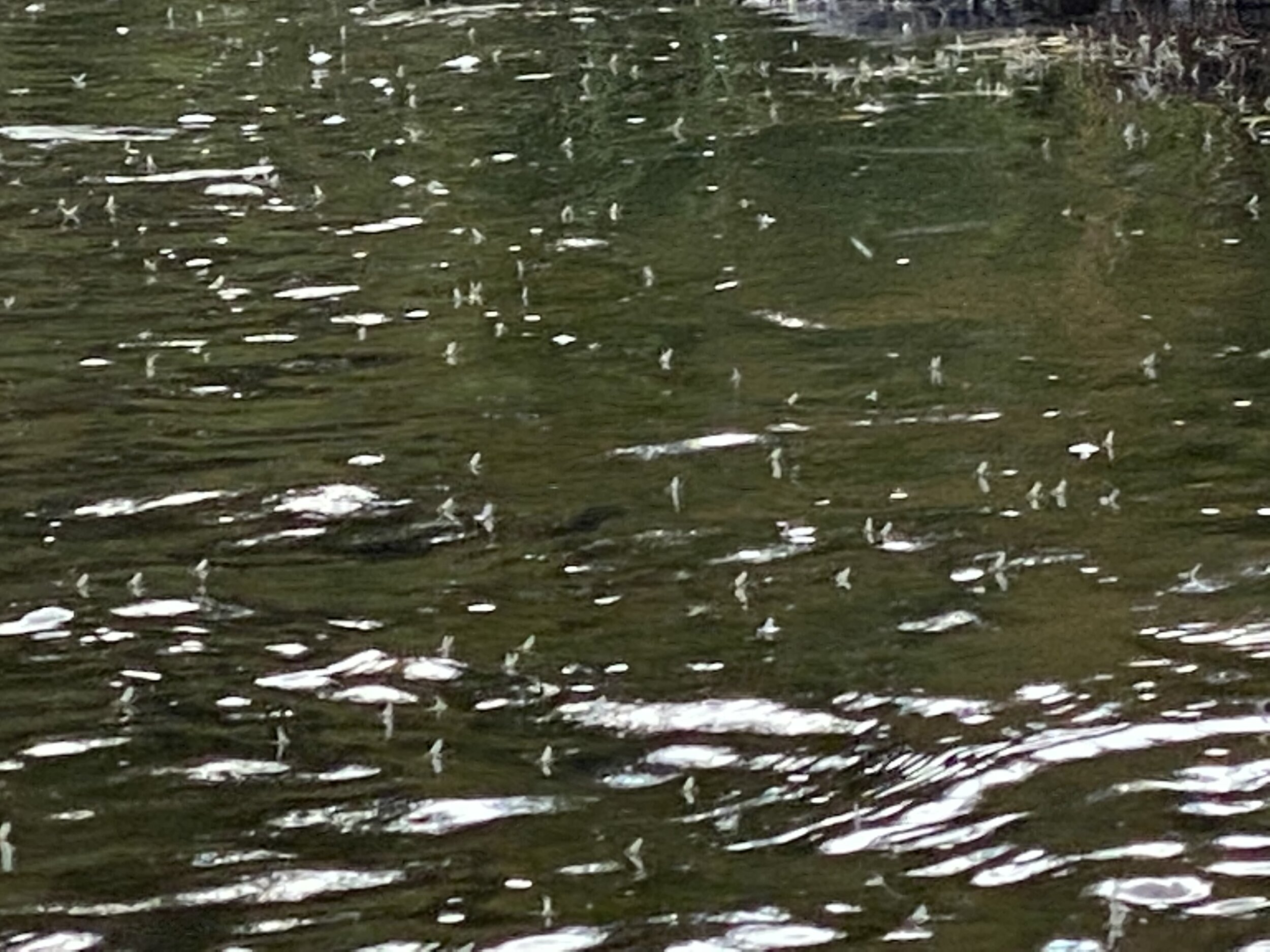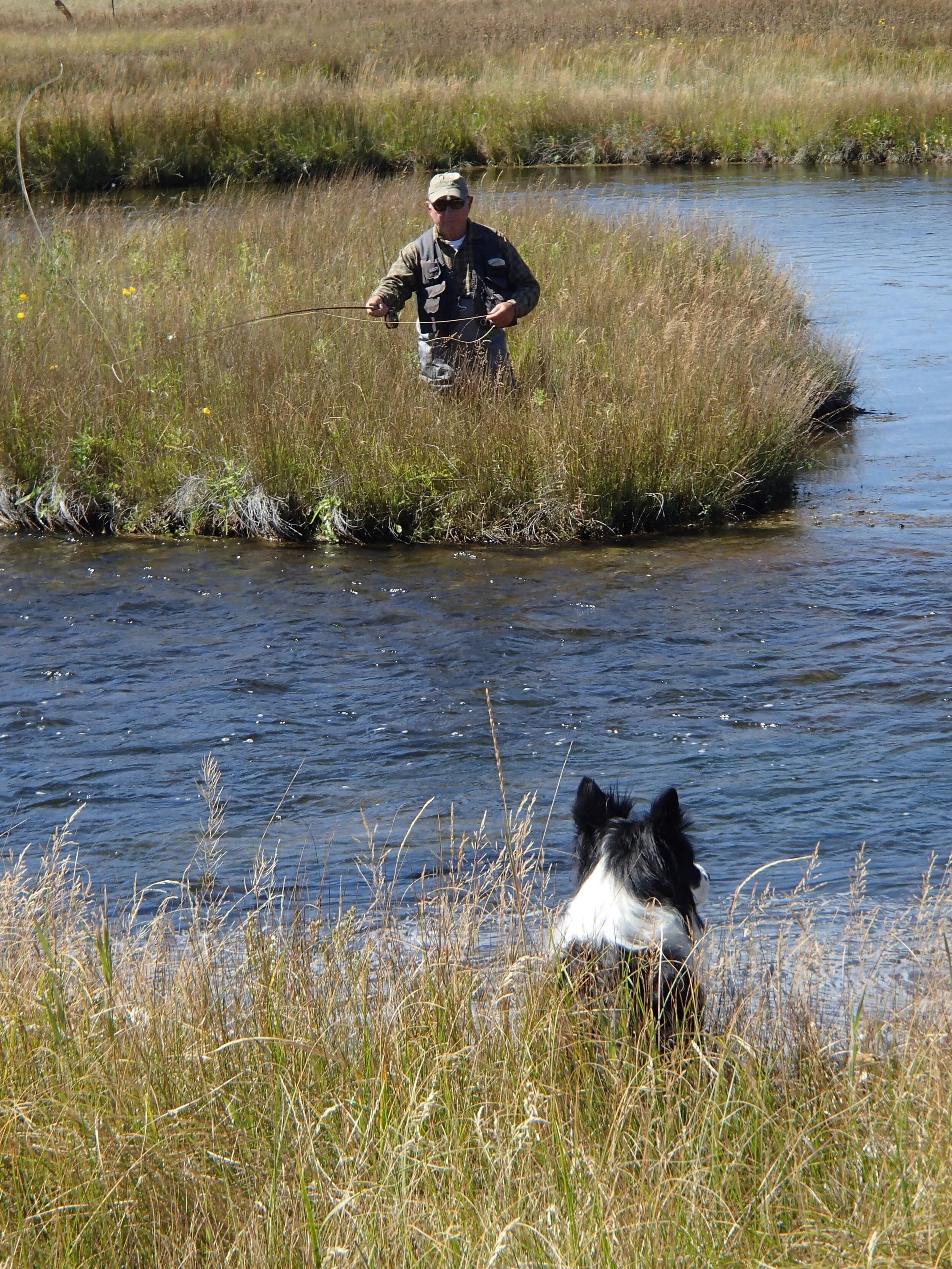Tippy, fishing observer and companion.
In the past many fly-fishing authors stressed the need for anglers to use their powers of observation. Vince Marinaro, Ennie Schwiebert, Datus Proper, Doug Swisher and Carl Richards, and John Juracek and I spent much of our onstream time observing trout behavior.
We wanted to determine what stage of insect trout were feeding on whether emerging nymphs, impaired-crippled duns or half-spent mayfly spinners, for instance. Several developed fly patterns accordingly, to represent the life stage of insect the fish were taking, or what big-selective trout keyed on or recognized about an insect that brought them to take it over the more numerous insects that might be present on the water. Flies like our Sparkle Dun mayfly series, Iris and X Caddis, and Improved Zelon and Scotty’s Midges are examples of some of the many ideas and resulting fly patterns we came up with observing what the river and trout were telling us.




Take a look at the photos within this post. The first is a shot of Yvon Chouinard fishing a spring creek with our fishing companion and observer Canine Tippy. Yvon and I approached this pool and without taking a minute to observe what the stream was telling us, we began pitching grasshopper patterns in likely spots within the pool. Result, not a rise. As I kneeled next to Tippy it dawned on me that she was keenly observing the pool, something certainly had her attention. At first, I thought she was merely watching Yvon casting away with no success. I sat behind her and noticed she was focused on the foam line you see in front of her. I watched closely, sure enough she was observing a fish rising subtly in the foam, its dark chin poking thru the foam for something in the drift. I bellied closer now with nose to the water and watched emerging midges drifting in the foam. Many of the emerging midges were trapped in their nymphal shucks. Two trout now were sipping only the impaired midges unable to escape the surface tension, their wings or abdomens stuck in the shucks. I twisted around to scootch back to Tippy and not disturb the risers when I my left ham tightened and cramped up forcing me to rise to my knees that put the fish down.
We moved on to other water, but I knew I’d be back and find the fish rising again. I planned to present a #22 Improved Zelon Midge. After lunch I snuck back to the pool while Tippy and Yvon worked upstream. I sat on the water and observed. Soon a nose peaked thru the foam and I knew one of the fish was back taking emerging/impaired midges by its subtle riseform. Three pinpoint accurate presentations with the fly knotted to 6x tippet and I was fast into a plump 17” rainbow trout that cartwheeled through the pool and came to net a short time later.
Rainbow sipping emerging midges.
Just this afternoon I was fishing the Madison River near $3 Bridge when a Baetis (BWO) mayfly emergence began around 3pm. Perfect conditions existed for a strong hatch of the tiny olive duns. The first rain and cool air temps we’ve had in 10 days brought on a strong emergence and big-selective trout rose to the duns. My friend and I took turns fishing to rising fish, landing several fine brown and rainbow trout while we bantered back and forth how clever we were to have the right flies, and how easy the fishing was. That was, until the fish began ignoring our #22-24 Baetis Sparkle Duns.
I laid out on rocks at the bottom of a favorite pool to once again observe, and do what the river told me to do. It didn’t long to discover emerging midges mixed in with the olive mayfly duns.
I watched as a couple midges were taken by trout that ignored the larger mayflies ten feet from my perch on the rocks. A quick switch to a #22 Improved Zelon Midge and I was back in business taking a few more selective trout before all dry fly activity ceased for the day, and what a great day it was. Again, because I took a few moments and observed, and simply did what the river and its wild trout told me to do.
The final fish of the day was a fine brown trout, photographed next to #13 Patagonia wading boots taken just a stone’s throw above $3 Bridge.
Observation is key in conservation work as well. Many organizations beg for gifts and donations and brag about the great work they are doing. When we observe and investigate we find some actually do very little of what they purport to accomplish, some actually whitewashing and covering up agency mistakes and outright lies.
We like the best bang for our bucks, that’s why conservation and environmental organizations we support have long histories of small payrolls and administration costs, and lots doing the strong grassroots advocacy and activism work they say they are.
A couple groups we’ve partnered with are Montana Sportsman Alliance, Conservation Hawks and Mountain Journal. Please check them out and support them. They stand tall and advocate for those things we all love about Yellowstone country from its wild and native trout and wildlife to public lands, clean water and air.
Thanks for your support and reading this, and your comments and observations along the way.
Stay tuned for more updates and reports but keep in mind, it is fall, our most favorite time of the year. We’re fishing and hunting and enjoying our public lands before the snow-wind and cold come to Yellowstone country. With that I might be a few days longer between blog and Instagram posts, but please stay tuned and Thank You.








